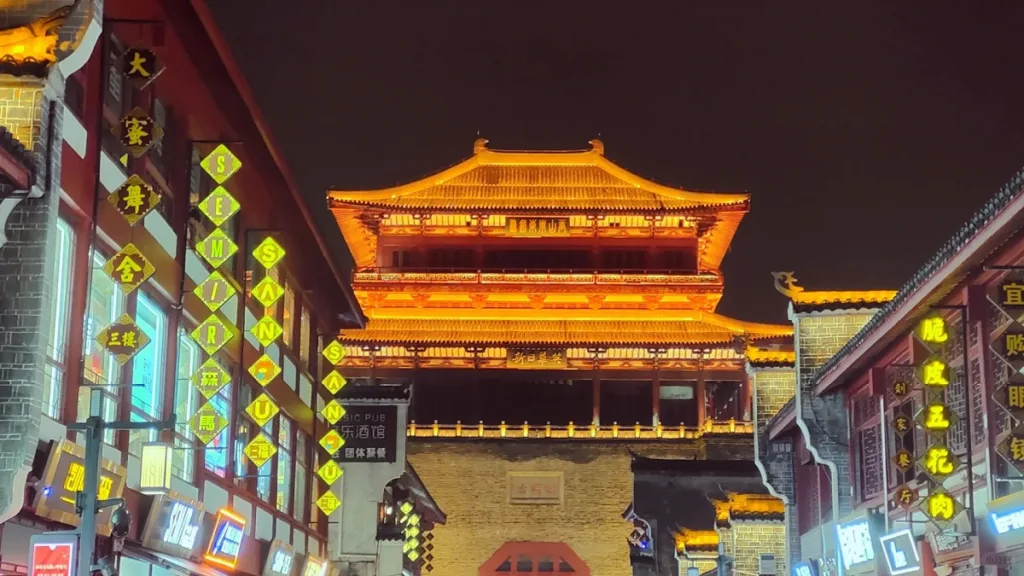Xiangyang Ancient City – Ticket, Opening Hours, Location, and Highlights


Xiangyang Ancient City (襄阳古城), situated on the southern bank of the Han River in Hubei Province, is renowned for its strategic location with water on three sides and mountains on one, making it easy to defend and difficult to conquer. It stands as one of the most famous ancient city fortification systems in Chinese history and the most intact ancient defensive structure in the country, highly esteemed by military strategists throughout the ages.
Believed to have been initially constructed in the sixth year of Emperor Gao of the Western Han Dynasty (201 BCE), the exact location of the city’s founding lies along the northwestern banks of the Han River. During the early years of the Ming Dynasty’s Hongwu reign, extensive renovations were carried out, including the expansion of the city to the northeast to enhance its defensive capabilities, resulting in a perimeter stretching 7.3 kilometers and covering an area of 2.5 square kilometers.
Table of Contents
- Basic Information
- Location and Transportation
- Highlights of Xiangyang Ancient City
- Vlog about Xiangyang Ancient City
- Attractions near Xiangyang Ancient City
Basic Information
| Estimated Length of Tour | 3 hours |
| Ticket Price | Free |
| Opening Hours | 8.00 – 17.30 |
Location and Transportation
Xiangyang Ancient City is located in Xiangyang District, Xiangyang City, Hubei Province, situated on the southern bank of the middle reaches of the Han River. To get there, tourists can take bus 6, 8, 13, 24, 28, 29, 512, 517, 532, D51, G03, or K15 and get off at Shizijie Stop (十字街站).
Highlights of Xiangyang Ancient City
Ancient City Walls and Moats

Spanning a perimeter of 7,311 meters, the ancient city walls of Xiangyang are nearly square in plan, standing at a height of 10.84 meters and a thickness ranging from 11 to 14 meters. Originally featuring six city gates and gatehouses named “Yangchun,” “Wenchang,” “Xicheng,” “Gongchen,” “Zhenhua,” and “Linhan,” today only the gatehouse of Linhan Gate, the Wengcheng of Gongchen Gate, and the Wengcheng of Zhenhua Gate remain. The walls are fortified with over 4,000 battlements. To the east, west, and south, the city is protected by moats approximately 180 to 250 meters wide and 4 to 8 meters deep, connecting to the Han River to the north, making it one of the widest moats in Asia.
Zhaoming Tower

Also known as the Bell and Drum Tower, Zhaoming Tower stands as a symbol of Xiangyang Ancient City. Built in memory of Prince Zhaoming (Xiao Tong) of the Southern Liang Dynasty, it rises to approximately 15 meters. The tower is flanked by four rooms on each side, with a drum tower and a bell tower to the southwest. Prince Zhaoming, the eldest son of Emperor Wu of the Liang Dynasty, was born in Xiangyang and compiled the “Zhaoming Wenxuan,” leaving a lasting legacy for posterity.
Zhongxuan Tower

Located on the southeastern corner of the city walls, Zhongxuan Tower was built in honor of the poet Wang Can from the late Eastern Han Dynasty. Originally constructed during the Eastern Han Dynasty, it was rebuilt by Vice Historian Zhao Hong’en during the Qing Dynasty’s Yongzheng reign. Later, in the 25th year of the Qianlong Emperor’s reign, it was restored by Hu Yi, the magistrate of Xiangyang. Destroyed during wartime in the early years of the Republic of China, the Xiangyang Municipal Government restored Zhongxuan Tower on its original site in 1993. Alongside Yellow Crane Tower, Qingchuan Pavilion, and Yueyang Tower, Zhongxuan Tower is hailed as one of the “Four Great Towers of Chu.”
Vlog about Xiangyang Ancient City
Attractions near Xiangyang Ancient City

Migong Temple

Xiangyang Tang City Film and Television Base
Hubei Historical Sites, Xiangyang Attractions